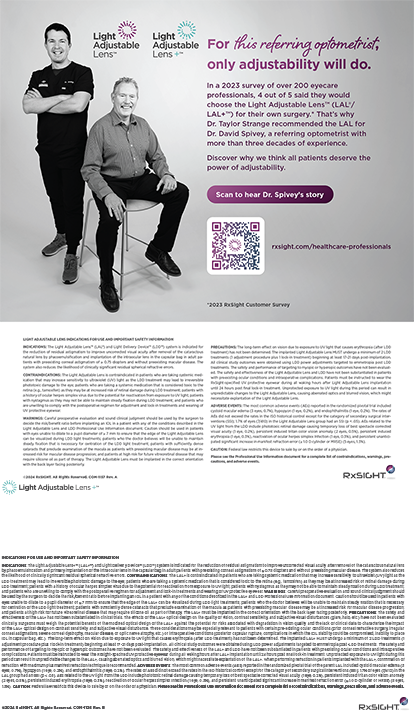
The phrase “Culture eats strategy for breakfast” is often attributed to writer, management consultant, and self-described social ecologist Peter Drucker. But if culture truly eats strategy, then how does one build a culture that is predictable and reliable? Moreover, in a world in which strategy governs both day-to-day operations and larger decisions (growth into new markets, questions of whether or not to sell to private equity, decreasing reimbursement, rising team and capital costs, and the risk of physician and leader burnout), how does culture rise above strategy in importance?
Strategy alone may fall short of the changes required to breathe life into an organization, whereas a strong central culture can both set the framework for effective strategy and help course-correct the strategy during key moments in a company’s history.
THE THREE PILLARS
In our centers, we build our culture around three pillars: (1) always do what is right; (2) invest in the world’s most advanced technology; and (3) create customer and team experiences that are second to none. There are inherent strengths and weaknesses in each pillar.
Pillar No. 1: Always do what’s right. Many patients already believe we are going to do the right thing as the clinicians, surgeons, and other personnel who provide their care, simply because we wear white coats and make strong recommendations about clinical and surgical plans. This pillar is more for the team than it is for patients. We know that management and providers can cut corners to maximize profits, preserve the status quo, and stay comfortable. Differentiating one’s practice solely by doing the right thing is a strategy that, if executed well, will add baseline value, but it will fall short of full differentiation.
Pillar No. 2: Invest in the world’s most advanced technology. Investment in advanced technology is differentiation that is important for leading, premium brands to claim. But some messaging impact is lost because most patients, and even some referring eye providers, don’t understand the salient differences between various technology options. Therefore, differentiating one’s practice based on advanced technology is vital, but it would be shortsighted to focus on this pillar exclusively.
Pillar No. 3: Create customer and team experiences that are second to none. Creating a strong customer experience is an advantage that patient-customers do understand, and it resonates deeply with them. It makes them want to tell their friends and family about their experiences, and it makes them want to come back to or recommend a practice.
In the past few years, we have added another definition to this pillar: Create a team experience that is second to none. This is because of a core value that our providers, led by Vance Thompson, MD, FACS, and John P. Berdahl, MD, have lived by since Vance Thompson Vision opened in 1991. These leaders have long said that our centers must have a team-first—not a patient-first—mentality. This kind of thinking typically draws gasps from whatever audience may be listening, but considering this assertion at a deeper level reveals the essential correlation: Creating a team experience that is second to none creates a patient experience that is unparalleled.
We engage all 187 of our employees to act in a manner that aligns with the wishes of our providers and their very high standards. This maximizes the impact not only on all of our patients but also on every interaction our team has with patients, community members, friends, family members, and other colleagues. Even our competitors admire the ways in which our team members conduct themselves. Like the first two pillars, the third pillar is vital for achieving our goals of differentiation and focus, but it also provides standalone value and an incredible return on investment for our practice.
TRAINING IS KEY
The leaders of our center have written extensively about how to deliver a great patient experience. If our practice has been known for its focus on the patient-customer experience during the past 15 years, then it will be known for our investment in building and maintaining a team experience in the next 15 years. We must achieve this goal in order to create an excellent patient experience.
We have long been proud of how well our team adapts to the standards set by our leaders. We have found that, after just a few months of observing behavior modeling, our new employees begin to treat each other and our patient-guests much like our more experienced providers would.
How can this care be replicated in other markets, in other centers, and with new staff, providers, and leadership? Can culture be bottled?
In a word, no. For years, businesses like ours were small enough to model the behavior most desired by leadership. Team members, in turn, would begin performing to those standards simply by environmental influences. We used to think that this qualified as training. However, when an organization grows, it can become difficult for the modeled behavior to reach all the way to the front line. Well, that is not training; it is simply exposing. What was a noble effort when the business was small can lack predictability as the business grows because of the varying environments in which the team finds itself during growth.
This is where training comes in: Through role-playing scenarios and situational examples that give team members opportunities to practice engaging and building relationships with the people in front of them, we can turn an exposure program into a training program. This, combined with testing, accountability, repetition, and gamification, creates the hope that what has become a winning culture can extend beyond the four walls of one center.
Future articles in CRST will be dedicated to showcasing methods in creating consistent team training. This should be businesses’ first priority—creating a team that desires to create a customer experience that is second to none. Our teams are as hungry for this as our patient-customers are to receive it. With hunger comes appetite. So, Druker had it right years ago: Culture does eat strategy for breakfast. What are you eating?




